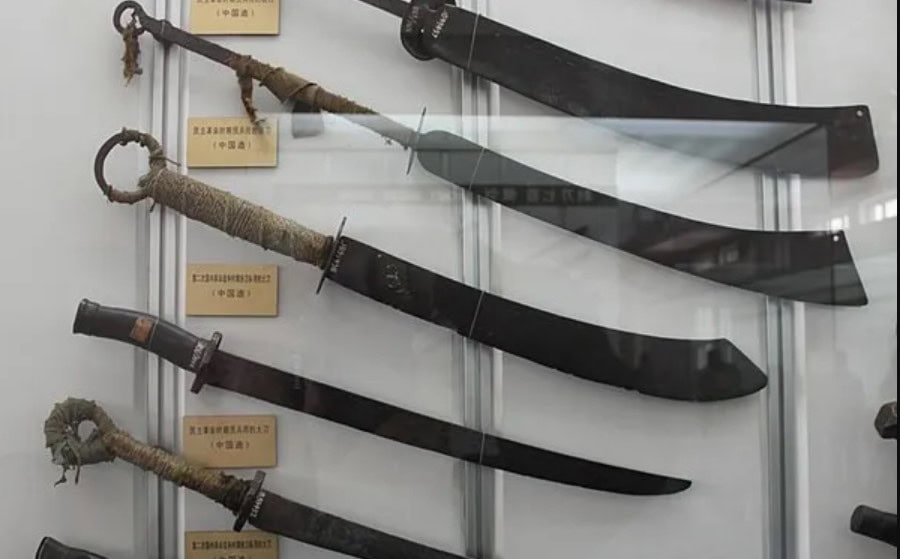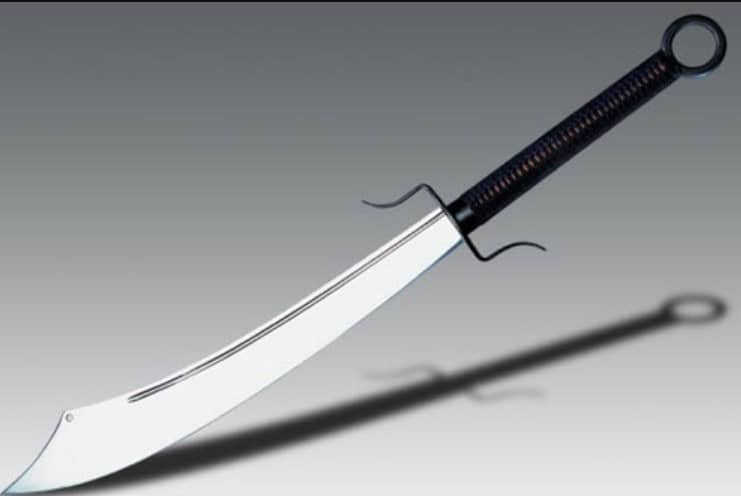What is a Chinese War Sword?
TLDR: The Chinese war sword, known for its formidable design and effectiveness in combat, evolved through history as a key weapon in warfare.
The allure of the Chinese war sword is something that draws me in, blending artistry with martial prowess in a way that’s truly captivating. These weapons have a rich history, evolving through centuries of conflict and craftsmanship, reflecting the changing dynamics of warfare in ancient China. From the elegant Jian to the formidable Dao, each type of sword tells a story of its own.
Historical Overview of the Chinese War Sword
The historical overview of the Chinese war sword reveals a fascinating evolution that reflects both technological advancements and the changing nature of warfare in ancient China. The emergence of swords in ancient China can be traced back to the Bronze Age, around 1600–221 BCE, when early blades were primarily crafted from bronze. These initial swords were relatively short and designed for thrusting rather than cutting, serving as secondary weapons alongside spears and halberds. As warfare evolved, particularly during the Warring States period (475–221 BCE), the need for more effective weapons led to significant developments in sword design and material.
The evolution of the Chinese war sword through different dynasties showcases a remarkable journey of innovation. During the Qin Dynasty (221–206 BCE), swordsmiths began to produce longer swords, transitioning from bronze to iron and eventually steel. This period marked a turning point in Chinese sword-making techniques, with advancements such as quench-hardening and pattern welding becoming common practices. The Han Dynasty (206 BCE–220 CE) further refined these techniques, resulting in lighter and more durable swords that were better suited for cavalry use. By the time of the Tang Dynasty (618–907 CE), craftsmanship reached new heights, with swords characterized by their balance, beauty, and effectiveness in combat.
Key historical periods have significantly influenced the design of the Chinese war sword. The Warring States period saw the introduction of longer blades that could be wielded effectively on foot or horseback. The subsequent rise of cavalry during this time necessitated changes in sword design, leading to the development of double-edged swords like the Jian and single-edged sabers like the Dao. The Mongol invasions during the Yuan Dynasty (1279–1368) introduced new styles and techniques, particularly curved sabers that became popular among both military and civilian populations. Each dynasty contributed unique elements to sword design, reflecting the martial needs and technological capabilities of their respective eras.
| Period | Key Developments |
| Bronze Age | Emergence of short bronze blades |
| Warring States | Introduction of longer blades for thrusting |
| Qin Dynasty | Transition to iron; longer swords |
| Han Dynasty | Refinement with quench-hardening techniques |
| Tang Dynasty | Golden age of craftsmanship; balance and beauty |
Materials Used in Chinese War Sword Construction
The materials used in the construction of Chinese war swords have evolved significantly over the centuries, reflecting advancements in technology and metallurgy. Early Chinese war swords were primarily made from bronze, a material that dominated weapon-making during the Bronze Age, which began around 1600 BCE. Bronze swords were typically cast and often featured intricate designs, but they had limitations in terms of durability and sharpness. As warfare evolved and the demand for more effective weapons increased, iron became the preferred material by the time of the Warring States period (475–221 BCE). Iron swords offered greater strength and flexibility compared to their bronze counterparts, allowing for longer blades that could withstand the rigors of battle.
The transition to steel marked a significant turning point in Chinese sword-making. By the late Warring States period, advancements in metallurgy led to the widespread use of steel, which was produced through techniques such as quenching and tempering. This process involved heating the metal to high temperatures and then rapidly cooling it, resulting in a harder blade that could maintain a sharp edge. The Han Dynasty (206 BCE–220 CE) saw further refinement of steel production methods, including the introduction of folded steel techniques. This method involved repeatedly folding and hammering the metal to eliminate impurities and create a strong, resilient blade. The mastery of these techniques would define Chinese sword-making for centuries to come.
In modern times, contemporary sword-makers have incorporated advanced materials and techniques into their craft. High-carbon steel has become a popular choice due to its ability to hold a sharp edge while remaining durable. Additionally, stainless steel is often utilized for decorative swords because of its resistance to corrosion. Modern blacksmiths may also employ electric or gas forges for more precise temperature control and utilize power hammers to streamline the labor-intensive forging process. The combination of traditional craftsmanship with modern technology allows for the creation of swords that not only honor historical aesthetics but also benefit from contemporary advancements in metallurgy.
Key materials used in the construction of Chinese war swords include:
- Bronze: Early material used for casting swords
- Iron: Provided greater strength during the Warring States period
- Steel: Became prevalent due to advancements in metallurgy
- High-carbon steel: Commonly used for its durability
- Stainless steel: Often used for decorative purposes
Physical Characteristics of the Chinese War Sword
The physical characteristics of the Chinese war sword are defined not only by their functional aspects but also by their intricate designs and craftsmanship. Hilt designs are particularly crucial, as they directly influence the sword’s usability and handling. A common feature of many Chinese war swords is the use of a cord-wrapped grip, which provides a secure hold even in the heat of battle. This design helps absorb shock and prevents slipping, enhancing the wielder’s control over the weapon. The hilt often incorporates an “S”-shaped guard, which serves to protect the hand from enemy strikes while allowing for fluid movement during combat. Additionally, many swords feature a steel ring pommel, which aids in balance and can be used to secure the sword to the wielder’s hand or for hanging it when not in use.
The decorative elements and craftsmanship styles of Chinese war swords add another layer of significance to their design. Historically, swordsmiths adorned blades with intricate engravings, inlays, and motifs that reflected cultural themes or personal stories. Common decorative elements included dragons, phoenixes, and other symbols that conveyed power and nobility. The craftsmanship varied significantly across regions and dynasties; for instance, swords from the Ming Dynasty often showcased elaborate designs that highlighted the skill of the artisan while also serving as status symbols. Techniques such as folding steel were not only functional but also created visually striking patterns on the blade, making each sword unique.
| Feature | Description |
| Grip Design | Cord-wrapped for secure handling |
| Guard Type | “S”-shaped for hand protection |
| Pommel Style | Steel ring for balance and attachment |
| Decorative Elements | Engravings featuring cultural motifs |
| Craftsmanship Variations | Regional differences reflecting local styles |
As someone who enjoys delving into weapon design, I find the details of hilt construction particularly fascinating. The way these elements come together to enhance both functionality and aesthetics speaks volumes about the artistry involved in sword-making.
Final Thoughts
As I delve deeper into the world of Chinese war swords, I can’t help but appreciate their intricate designs and historical significance. The craftsmanship that goes into creating these weapons is remarkable, showcasing the skills of artisans who have passed down their knowledge through generations.


